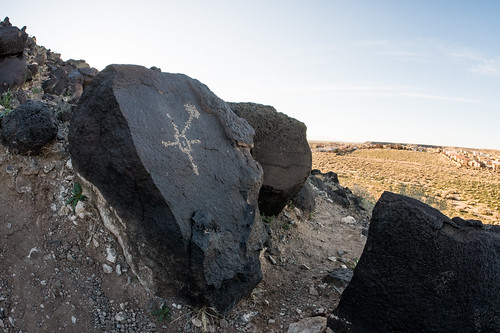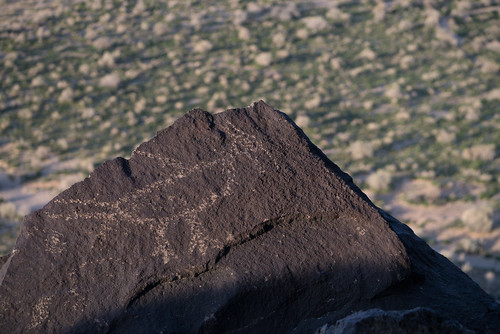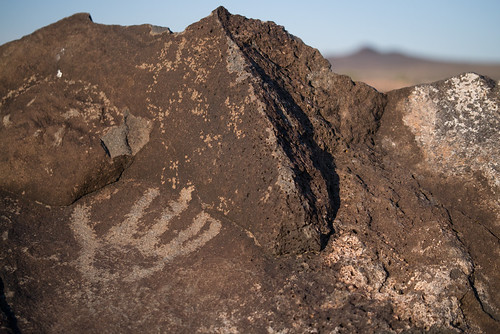One final post of images from my recent trip to Albuquerque, New Mexico. Very close to my hotel, Petroglyph National Monument offered a unique early morning walk before my business meetings started.
Petroglyphs are images by native people of the area, made by chipping away at the surface of the basalt rock in the area. The basalt stones were created about 200,000 years ago, when lava flowed 5-50 feet thick over a series of six separate eruptions. These boulders have a thin dark patina layer on their surface, caused by water, sun, temperature extremes, and microbes. It was by chipping away at the outer layer and exposing the lighter stone color underneath that native Americans made the petroglyph images.
Petroglyph on the Mesa Top, by Reed A. George
Panasonic Lumix DMC-GX7, Bower 7.5mm f3.5 Fisheye Lens
iso 400, f-stop unrecorded, 1/250 sec.
Most of these petroglyphs were made 400-700 years ago. Those from that period ("Rio Grande" style) include human figures, masks, hands, feet, as well as animal shapes and tracks, and geometric designs. Others date back as far as 3,000 years.
Various Petroglyphs, by Reed A. George
Panasonic Lumix DMC-G1, Pana-Leica Macro-Elmarit 45mm f2.8 Lens
As I've written in other posts, I found the Bower fisheye lens to be very useful on this trip. This was a bit of a surprise for me, as I've always thought of fisheye lenses as gimmicks, for special effects only. On this walk, I carried the GX7 with the fisheye attached, and my backup Micro 4/3 body, the GX1, with the Macro-Elmarit. This made for a very good combination in this particular setting.
DMC-365.blogspot.com





No comments:
Post a Comment